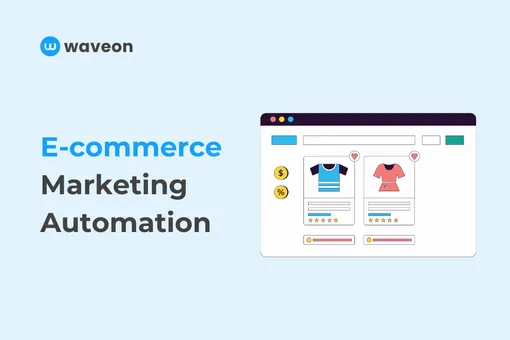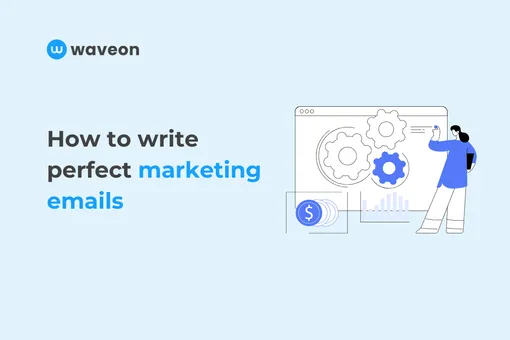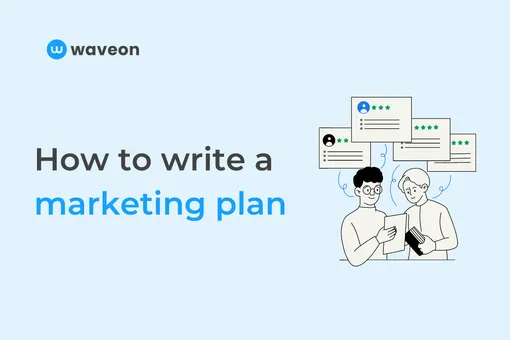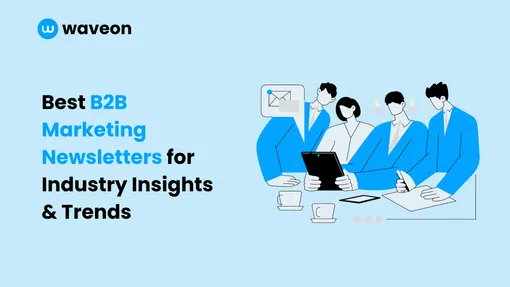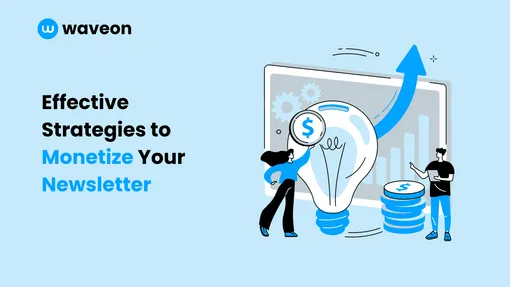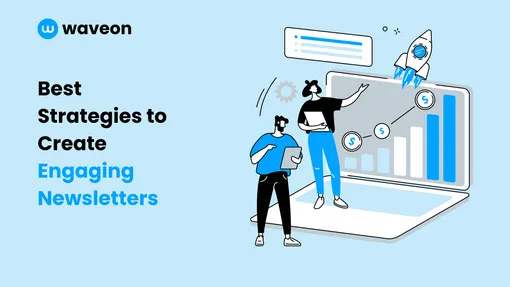Marketing
5 Ways to Build A Strong Brand Identity for Startups
Waveon Team
10/18/2023
0 min read
TABLE OF CONTENTS

Introduction
Knowing how to build a strong brand identity is the key to unlocking market dominance and establishing profitable, enduring relationships with consumers.
Out-of-the-box thinking has never been more crucial for brands who are now facing levels of market saturation that make the 2000s advertising sector look like an abandoned playground. However, most brands, most likely including your own, are already acutely aware of this.
The problem today isn’t so much understanding why building a strong brand identity is important but rather how to create one in a way that’s simple, effective, and, perhaps most importantly, achievable.
In this article, we’ll share some innovative brand development strategies for start-ups, SMEs, and any business or brand that wants to elevate its market position and leverage the resources it has to become a bigger, bolder, and more successful entity on the global marketing stage.
A Strong Brand Identity Is Your Ticket To Brand Recognition And Equity
Knowing how to build a brand identity becomes even more important for new or young businesses, such as startups. This is because, without the advantage of pre-existing familiarity with audiences, the consumers in your target market need a clear and preferably very well constructed introduction to you.
They need to meet you! And you need to make a good impression. Otherwise, your brand is vulnerable to being swallowed up by the myriad of other brands in the business who’d be happy to take your place.
Sadly, there’s no singular go-to market strategy for startups and other business models that fixes all your problems at once. However, there are several effective, well-researched strategies you can implement to bolster your brand identity and create one that’s strong, relevant, and incomparable.
Here are a few of them.
1. Develop A Unique, Cohesive Visual Brand Personality
Consumers see what you look like before they know who you are—or the types of products and services you sell. Developing a strong visual identity is one of the most important steps you can take as a brand to separate yourself from competitors and establish yourself as a frontrunner.
Most businesses already understand that they need to build brand identity in order to stand out among the crowd. But few have fully grasped the scope and level of detail that this strategy involves.
A strong brand identity isn’t just about having a great logo and a decent website with matching colors.

Typography, buttons, composition, graphics, widgets, characters, and cursors—all of these elements combined make up the intricate digital fabric of your brand’s visual identity and language. Your branding needs to carry through to every element of your marketing material, no matter how small. It needs to be instantly recognizable, and it must evoke an emotional connection in anyone who comes across it.
It’s brands that fully grasp this who give themselves the edge over their tend competitors.
Take the world’s most downloaded meditation app, Headspace, for example.
Over the years, they have developed an exceptionally curated visual presence both online and in the real world. Their brand identity is all about accessible mental health support. To reinforce this, they use soft-edged illustrations, gentle pastel colors, and a host of cute, memorable characters that look and feel like friends you can genuinely relax with and feel safe around.
Headspace knows its audience is largely comprised of Gen Z and Millennial consumers. With this in mind, its branding takes a quirkier, more fun approach to brand design that starkly sets it apart from the more solemn, neutral visual identities of other wellness apps.
The moral of the story here is to develop a visual identity that is original and seamlessly consistent across all platforms, channels, and sites. And, at the same time, craft an identity that deliberately contrasts with other brands competing in your market sector.
2. Nurture Authentic Relationships With Your Audience
Focusing on the relationship you share with your audience is crucial for building strong brand identity and equity. Consumers want to be wooed by you.
So, what do you do when you are trying to romance someone? You anticipate their needs. You pay attention to them. You spoil them with treats. You treat them with respect.
The Pareto Principle is frequently applied to marketing and business. The principle theorizes that 80% of businesses’ future revenue will come from 20% of their current customers. This tells us that cultivating a strong relationship with your existing consumers and providing them with incentives to stick around are two of the best strategies for long-term success. Plus, it’s more cost-effective to retain customers than to seek out new ones, making relationship-building even more profitable.
There are a few ways to nurture authentic, lasting relationships with your audience.
One such method is that of URL-shortening company Bitly, which has become the household name for link-building and back-end URL analytics. Their method involves achieving customer loyalty and engagement by offering marketers extensive insights into how they can improve their campaigns, providing a unique value exchange that sets them apart from other tech and software brands.
Relying on a go to market strategy for tech startups isn’t going to woo anyone long-term. You need to take note of Bitly’s unique angle and learn from their approach.
When strategizing how to build a strong brand identity, it is important to ask yourself and your business as a whole how you can provide unique, high-value services that go above and beyond competitor’s packages. When you get this right, you’ve got what you need to start the wooing process.
3. Know Thy Enemy

Ever heard the phrase, “Keep your friends close and your enemies closer”? It might sound a bit dramatic to refer to your market competitors as enemies, but let’s not kid ourselves here. The marketing world is brutal, and the brands that stand out are the ones that win.
Many of the go-to marketing strategies for startups and other business types on this list involve making decisions that differentiate your brand identity from those of your competitors. But how can you know what to do differently if you don’t even know what your competitors are doing in the first place?
Knowing how to build a brand identity that is unique and stands out in a crowded marketplace means keeping a close eye on mainstream brand behavior and identity choices. You need to keep tabs on what your competitors are doing, what’s working for them, and what’s not.
Performing continuous, comprehensive research on the brands you want to beat can help you to form a clearer understanding of your own market position. Plus, it can help you to make more calculated design decisions about your brand identity and persona. You don’t want to mimic what your competitors are doing, but you do want to work out how you can leverage your brand in the marketplace.
Doing competitor research is crucial for building a brand identity that’s familiar enough for consumers to feel comfortable engaging with you but unique enough to set you apart.
4. Transparency Is Key
If you want people to purchase your product, buy your service, invest in stocks, or do anything that requires handing over money, you need to earn their trust. One of the best ways to earn trust is to embrace transparency as a key element of your core brand identity and persona.
So, what does it mean to embrace transparency?
It means being open and honest about your brand and what it offers the world.
This includes everything from providing clear practical information, such as pricing structures and product usability, to matters of identity, such as brand values, motivations, and your vision for the future.
Social media software brand Buffer is an excellent example of a brand that embraces transparency. They have gained consistent attention over the past few years for their open, earnest approach to marketing. They are known throughout the industry for publically publishing honest details about their operations, numbers, growth progress, and even salary information on their website.
This transparency has earned them the authentic trust of consumers—and an enormous online following to boot.
Furthermore, talented job-seekers are looking for start-ups that embrace transparency, making those that do embody this important trait more likely to attract high-performing employees. In the long run, this can boost your chances of success and help you build a stronger, more competitive identity.
5. Let Your Consumers Speak For Themselves
Before we wrap up, let’s touch on the role that consumer feedback and customer behavior plays in brand identity—and brand perception.
The way your current customers perceive you has a lot of influence over how other consumers within your target market will. The way your customers behave now and in the future also speaks volumes to others who are considering investing in your brand. As scary as it can be, making their voices known can help you become a more well-liked and trustworthy brand.
Making reviews, testimonials, and general feedback a permanent part of your marketing strategy can help to foster deeper audience relationships. Additionally, it can provide you with valuable information about how you can evolve and change to better meet your consumer’s needs.
Building a strong brand identity is not an overnight process. It's an ongoing journey that requires constant adaptation, insight, and adaptation. However, if you want to be successful, this is what it takes.
Conclusion
It’s a digital jungle out there, and relying on a go-to-market strategy for startups isn’t going to keep you alive for long. You need to know how to build a brand identity to ensure your survival.
A strong brand identity is key to helping your business rise above competition and attract audiences in a sustainable, authentic way. As a start-up, specifically in the notoriously oversaturated tech sphere, finding ways to claim your spot and establish your identity as an original entity is crucial for forming strong consumer relationships and outliving—as well as outshining—anyone who stands in your way.





